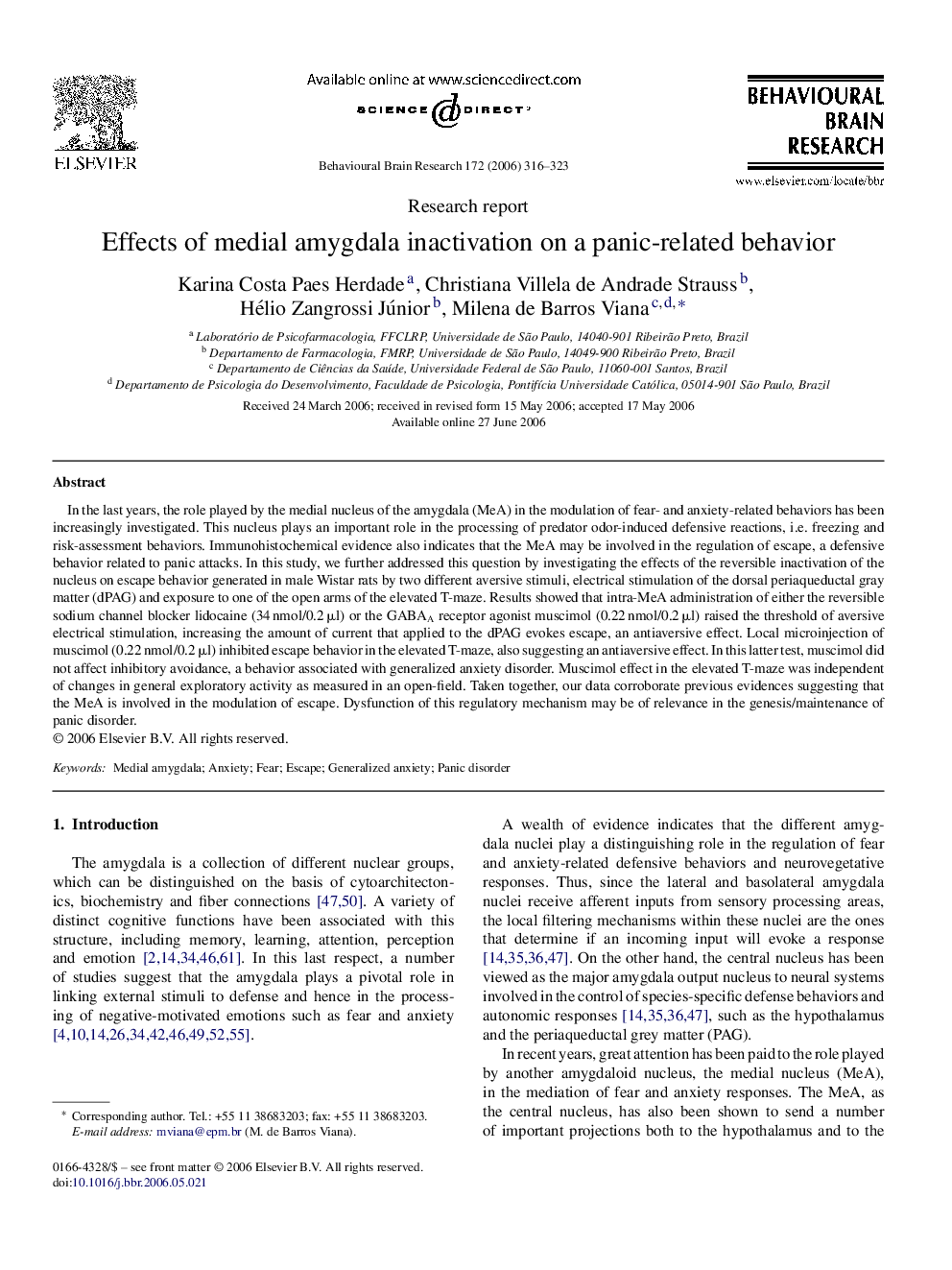| Article ID | Journal | Published Year | Pages | File Type |
|---|---|---|---|---|
| 4316176 | Behavioural Brain Research | 2006 | 8 Pages |
In the last years, the role played by the medial nucleus of the amygdala (MeA) in the modulation of fear- and anxiety-related behaviors has been increasingly investigated. This nucleus plays an important role in the processing of predator odor-induced defensive reactions, i.e. freezing and risk-assessment behaviors. Immunohistochemical evidence also indicates that the MeA may be involved in the regulation of escape, a defensive behavior related to panic attacks. In this study, we further addressed this question by investigating the effects of the reversible inactivation of the nucleus on escape behavior generated in male Wistar rats by two different aversive stimuli, electrical stimulation of the dorsal periaqueductal gray matter (dPAG) and exposure to one of the open arms of the elevated T-maze. Results showed that intra-MeA administration of either the reversible sodium channel blocker lidocaine (34 nmol/0.2 μl) or the GABAA receptor agonist muscimol (0.22 nmol/0.2 μl) raised the threshold of aversive electrical stimulation, increasing the amount of current that applied to the dPAG evokes escape, an antiaversive effect. Local microinjection of muscimol (0.22 nmol/0.2 μl) inhibited escape behavior in the elevated T-maze, also suggesting an antiaversive effect. In this latter test, muscimol did not affect inhibitory avoidance, a behavior associated with generalized anxiety disorder. Muscimol effect in the elevated T-maze was independent of changes in general exploratory activity as measured in an open-field. Taken together, our data corroborate previous evidences suggesting that the MeA is involved in the modulation of escape. Dysfunction of this regulatory mechanism may be of relevance in the genesis/maintenance of panic disorder.
